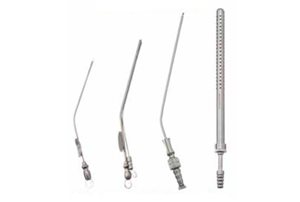We use cookies to understand how you use our site and to improve your experience. This includes personalizing content and advertising. By continuing to use our site, you accept our use of cookies. View our Privacy Statement.
TECH Talk: Proper Cleaning & Inspection of Suction Tubes
03.14.2019 • Industry News
Proper cleaning and inspection of suction tubes doesn’t have to...suck.Suction tubes are used remove fluids from the surgical site and are commonly found in many surgical instrument sets. Although they have a seemingly simple design, they are often difficult to clean and have become a source of frustration for many sterile processing technicians.
There are a wide variety of suction tube configurations consisting of different, lengths, diameters, angles, and tip styles including some of the most common suction tube patterns: Baron, House, Poole, Yankauer, and Frazier.

Here are some best practices that you can implement to help remove the frustration from suction tube cleaning and inspection:
- Always disassemble multi-part suction tubes (such as Yankauer Suctions) for cleaning and inspection.
- Select the appropriate cleaning brush style, and size (diameter & length) for the specific suction tube being cleaned:
- Brush diameter should be large enough for the bristle tips to contact the inner walls of the suction tube, but not so large that the brush may become lodged in the instrument or cause damage to the suction. Cleaning brushes are available in various diameters and lengths to clean all suction types, brushes diameters range from as small as 0.02” for very small diameter ENT suctions to over 0.5” for the largest suctions.
- Brush length should be long enough for the bristles to completely exit the tip of the lumen to allow blood/soil to be removed from the entire length of the suction tube.
- Inspect all suction tubes for sharp edges, and dents/kinks. Sharp edges can cause patient injury and dents/kinks may compromise the functionality of the suction tube. Instruments with sharp edges, dents, or kinks should be immediately removed from service to be repaired or replaced. Inspection aids such as borescopes or final pass-through verification tools can also be useful in verifying suction tubes are free from damage/debris during the inspection process.
Brandon VanHee, GTS
Clinical Educator, Key Surgical